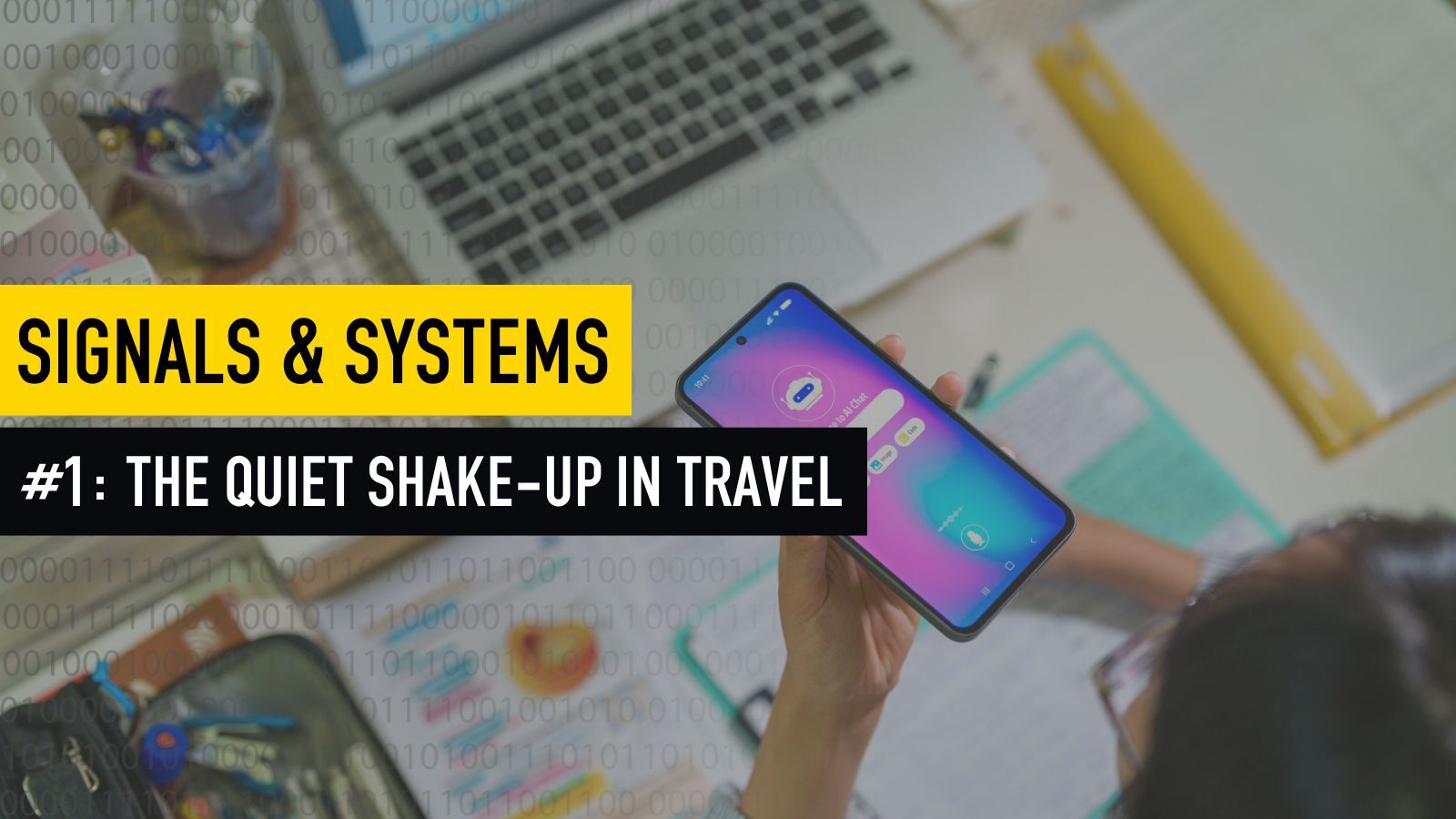Signals & Systems is a series sharing straightforward insights on technology, leadership, and day-to-day execution, directly from the operator’s perspective. Written by OAG COO Filip Filipov, each edition decodes the signals pointing to the future of tech and the systems we're using to get there.
Hello! Welcome to my newsletter. Every fortnight, I'll decode the signals and map the systems that are shaping tech, AI, and travel. For this first edition, let's dive into a few developments that point towards a quiet shake-up in travel. Disintermediation at the top is coming!
1 | Google I/O & OpenAI: multi-device beats “the AI phone” hype
Last week, two events hinted at the real architecture of the next computing cycle.
Google I/O 2025 showcased:
- Project Astra: camera-based reasoning, live object and text interaction
- Gemini’s real-time voice translation that preserves tone and speaker identity
- Gemini 1.5 across devices — from phones to desktop overlays to Android-powered XR glasses
- AI Mode in Search — turning Google into a first-responder assistant, not just a search engine
Google now serves 4 billion MAUs and processes 480 trillion tokens per month — and this cycle is just starting.
Just 48 hours later, OpenAI answered with elegance:
- Acquiring Jony Ive’s 50-person design studio (LoveFrom)
- Reported valuation: $6.5B (≈ 2% of OpenAI’s latest implied value)
- Promo teaser hinted at a world beyond black rectangles that are 'decades old'
The hype focused on a single, transformative “AI device.” But in practice? In my view, the real play is multi-modality + seamless context.
EarPods → Glasses → Phone → Desktop → Home
This is the AI stack. Not a device, but rather a distributed system.
Google wants to wrap Gemini into every surface. OpenAI wants to be the reasoning layer that flows through all of them. The device is less important than the graph of interactions between them — sight, hearing, and touch stitched into a personal system and ultimately, a multi-device world, even if the new AI form factor appears, seems to me where the puck is headed at least in the near future.
2 | Travel: top-of-funnel erosion has quietly begun
Let’s shift to the sector I’ve lived in for the past decade.
Google AI Mode now answers questions natively. Expedia’s Romie can join your iMessage group and build trips from chats. ChatGPT planners output whole itineraries. Add AI’s memory + preference layers, and we’re moving from:
“Inspiration → Plan & Search → Book → Experience” to “Intent → Experience.”
Similarweb’s April numbers confirm the shift:
- Skyscanner’s organic traffic fell 12% YoY
- Google Flights grew 21%
Control shifts to whoever knows you — not who owns the screen.
Convenience > loyalty and users will gladly exchange the pain of searching for the time back once they trust agents enough. One-click trips beat five-tab comparisons — if the agent understands your time, constraints, and preferences.
3 | Operator's Radar
A few things that caught my eye last week:
- Sequoia – “AI in 2025: Building Blocks Firmly in Place” David Cahn frames the modality stack and what it takes to build agentic companies. → https://www.sequoiacap.com/article/ai-in-2025/
- 20Sales × Reggie Marable (Sierra) What happens when pricing meets workflow + outcome guarantees. Boardroom-ready thinking on vertical AI. → https://www.thetwentyminutevc.com/reggie-marable
- MIT Tech Review – AI’s Energy Crisis Training the future costs power — potentially 50 nuclear plants worth. → https://www.technologyreview.com/2025/05/20/1116327/ai-energy-usage-climate-footprint-big-tech/
4 | Coming Up
Operating at Altitude: How Leaders Scale Decision Velocity. Data Visibility + Intent = Action.
Onwards.





